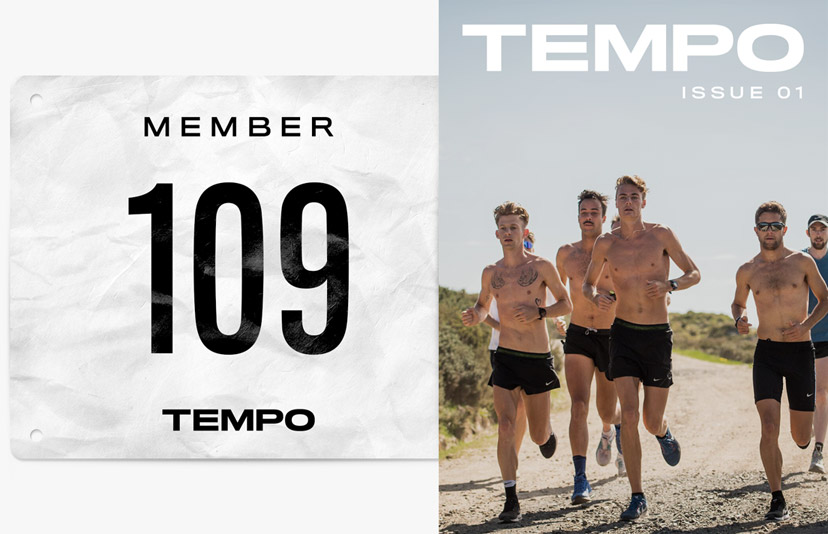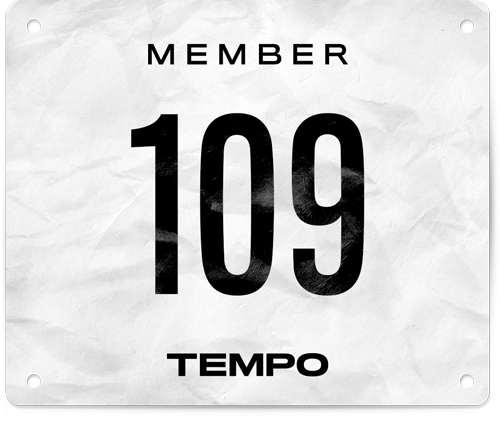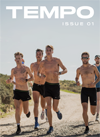Performance
The road to Atlanta
This women's collective are doing things their way - and it's working
The starting line can be an adversarial force. It corrals competitors in what ultimately becomes a wave of fear and anxiety. The wave grows into a tumultuous pressure only until the starting gun sounds, and the symbolic wave crashes, releasing newfound emotions of confidence and composure. But in the brief period before the gun sounds – the race starter's nimble finger resting lightly beside the trigger – the instinct for racers is to peer about in search of the familiar, a teammate. Someone to quell the flood of emotions in the moments leading to the start.
For some time, Caitlin Phillips' eyes had wandered about the start lines of New York races, no teammates to be found. She had raced for several well-regarded clubs in the New York area but, more recently, found herself standing in the corral unattached.
Yet, after a decade racing all over the five boroughs, Caitlin was not wholly alone. Competitors – some with the same restless gaze she wore – provided camaraderie. Many were also in between teams or on ones they had outgrown.
Fellow marathoner Allison Goldstein understood where Caitlin was at.
"A lot of teams are founded on the premise of shared workouts and training plans, but at a certain level if you're still an amateur with a full-time job, it's tough because you probably have your coach and your schedule, and you'd have to give that all up or completely rearrange it to be part of a team," she says now.
Caitlin, like many runners in New York, is mindful of the hardship the city imposes: a fast-paced lifestyle that places strain on careers, family, and friendships. "Sometimes you have to choose what kind of priority to give to the various things you do to train for a marathon – you have to learn to be confident with a 90 to 95-mile week, getting in 10 minutes of drills when you would like to be running 115 miles per week and going to strength, rehab, and meditating."
Amidst the hurdles presented by living and training in NYC, runners like Allison and Caitlin needed a more modern, progressive running club. A club that wasn’t afraid to stray from the more traditional, bureaucratic platform.
"We started last January [2019] as a collective of women who were interested in competition and racing and wanted to pursue goals within a supportive team environment that allowed some flexibility in terms of structure, coaching, and training, especially since we all work full time and train pretty seriously," Caitlin explained.
"A lot of teams are founded on the premise of shared workouts and training plans, but at a certain level if you're still an amateur with a full-time job, it's tough because you probably have your coach and your schedule, and you'd have to give that all up or completely rearrange it to be part of a team"
Allison Goldstein
Distance Project brings together a group of athletes who have entirely individual goals and training plans. But, as a unified group, it creates “a supportive team environment where we feel like one cohesive unit moving forward," Allison says. Thus, Distance Project is a collective of runners; there is no single chairperson or founder who controls the general identity of the team. It represents the amalgamation of many different ideas.
“We have come to the sport at different points in our lives and I really value the perspective that each teammate shares”
Team Member Aisha Qamar
One goal in particular has been shared by each of the athletes: represent Distance Project in Atlanta for the 2020 Olympic Trials. Invitations to Atlanta are for a select few; to qualify, women must run under 2:45:00 for the full marathon or 73 minutes for the half marathon. Just 198 women qualified in 2016, a testament to the strenuous standards.
For the athletes of Distance Project, running the most exclusive marathon in America has to fit around life's non-negotiables: work, relationships, and immovable obligations.
This year, the number of women qualifying for Atlanta grew dramatically from 198 to 511. Distance Project’s Sasha Whittle says it was only a matter of time before women made their mark on the sport.
“[The surge in qualifiers] means women are putting themselves in the mix more than ever before - we’re racing, we’re training, putting ourselves on the line and pushing the prior-thought limits. It’s not surprising to me; only a few decades ago we weren’t allowed to run marathons - so to see this massive increase in speedy women was inevitable.”
On February 29th, 7 of the competitors will wear Distance Project NYC’s logo on their chest.
The following stories from Ana, Angela, Caitlin, and Harriott indicate the diverse pathways to Atlanta; it is not as straightforward as traveling I-95 from New York to Georgia.
“It’s not surprising to me; only a few decades ago we weren’t allowed to run marathons, so to see this massive increase in speedy women was inevitable.”
Sasha Whittle
Ana Johnson
Ana is originally from Torreón, Coahuila, in Mexico, and running has played an active role in her life since she was a child – both of her parents were marathoners. As a young adult, Johnson moved from Mexico to the United States to learn English and to work as a nanny. She took some time off from running but when she eventually enrolled in college she gravitated to the track and cross-country teams.
Upon graduation she realized that, like her parents, she had a talent suited for the marathon. “I started training [towards an OTQ] in December 2017, so it was a long, rough, and cold winter. I trained in Central Park in winter conditions; snowy, windy and feeling like minus 15F! I remember, when I ran on the coldest days, my eyebrows were filled with ice! I could have gone to run on the treadmill, but it’s hard to be motivated on a machine.”
When not training, Ana remains on her feet, treating patients as an oncology nurse at Memorial Sloan Kettering Cancer Center. “Working with cancer patients can be very overwhelming, emotional, and stressful. My patients and my work sometimes feel like a different world where it is very clear what is important in life: love, family, and life and death.”
Harriott Kelly
Harriott recognizes the power of effective teamwork; it was the impetus to her successful OTQ attempt and her motive to join the Distance Project. “Coming off the incredible experience [in 2018] training with a group of women to achieve a common goal, I wanted that in a team,” she says.
"I'd like people to understand that you can be competitive, successful, and supportive at the same time. It doesn't matter which team you are on, find someone with a common goal, train together, commit to each other, and you will achieve great things."
Harriott Kelly
Marathoning has been a natural progression and transformative experience since Harriott’s mid twenties. “In marathon training, you get to see yourself transform, when you have those magical races and you achieve things you didn’t think were possible.” To Harriott, nothing is more magical than breaking the 2:45 qualification time. “It gives the common goal for women to work together and lift each other up to reach together.” Atlanta will not derail her team-oriented mentality, instead it will heighten it. “I think it will be a practice in patience. I’d love to be able to work hard with my other New York training partners and pull each other along in the race.”
CAITLIN PHILLIPS
Running could be described as Caitlin’s first love. She began in 6th grade, competing for her middle school cross-country program, a dedicated athlete but not yet a star. “I wasn’t very good, but I was very interested in running and really enjoyed it.” Caitlin ran through high school, eventually earning a roster spot at the University of Kentucky. After a successful college career, Phillips took time off from running and pursued her passion for photography and the arts in New York City.
Nearly ten years later, Caitlin has established herself as a staple of the New York running community. A two-time Olympic trials qualifier (2016, 2020), and a three-time top 20 finisher at the BMW Berlin Marathon (2017–2019), Caitlin admits brief breaks from the sport help her remain motivated. “The last 10 years, the key to my sustainability is taking long breaks after every marathon. It’s hard, it’s not always high highs, you have to have that ebb and flow. I fall in love again every time I start training for a marathon.”
The start to Atlanta training is not easy to fall in love with – January and February in New York can be “a little bit daunting.” But the grind is part of the thrill. “I do think that there is some twisted aspect of me that’s like ‘I really enjoy the training,’ and I think that that’s been a huge part of the ultimate success.”
When not running, Phillips chases her passion in art and fashion as an executive director of art production at MAC Cosmetics. “The cool thing about having a creative career is that it’s such a different environment, but I'm surrounded by super passionate people that care a lot about the work they do and put out into the world - which probably has a more profound influence on my running than I even give it credit.”
"The running community in NYC is wonderful. I don't think there is another place on the planet that has such a diverse and passionate group of people who enjoy putting one foot in front of the other as we do."
Caitlin Phillips
ANGELA ORTIZ
Angela is a 39-year-old Brooklynite and piano teacher who grew up running but, like so many athletes, fell away from the sport after high school. When she returned in 2011, Angela set her sights on the 2016 Olympic Trials, an idea she now looks back on as “silly.” After all, New York doesn’t cater for marathoners. “It’s not the ideal place to train hard,” Ortiz confesses. “If you can dodge the tourists on Citi Bikes in Central Park during the end of a long run progression – when your mind and legs are on the verge of grinding themselves into a fine dust – then you can manage the tougher mental aspects of racing. If you have the work ethic to get up very, very early in the morning to avoid the heat and humidity and throngs of people who will take over Prospect Park on a warm summer day, then you have the grit to tough it out when things get tough.”
And so, after four failed OTQ attempts over a two-year span, Angela ran the NYC marathon with no intention of trying to OTQ - and ran 3 minutes under the qualifying time.
Engrossed in her build-up for February’s race, Angela has allocated little time towards her emotions about Atlanta. “I haven’t really given much thought to my feelings on race day – but I suppose it’ll be joy and gratitude...When I cross the finish line, I’ll be happy if I know I didn’t back down or give into that inevitable voice that creeps into your head when you start to tire.”
“New York is not the ideal place to train hard,” Ortiz confesses. “The weather is mostly too hot or too cold. There are limited places to do workouts, the tracks are overcrowded, there are too many people, cars, bikes everywhere.”
Angela Ortiz
Training for a marathon is exhausting. It requires discipline, determination, and devotion in equal measure. Success is the sum of many parts, including hours, days, weeks, and months of training. In this time, there will be inevitable scheduling conflicts, the pressure of squeezing in runs at the early hours, and sacrifices that have to be made. Marathoners must accept the challenge – and be true to themselves and their goals – if they’re to reap the ultimate reward at the finish. The athletes of Distance Project must be willing to go through this trial if they’re to reach Atlanta, for some after an all-too-abbreviated break.
But there is a catch. New York is not a conventionally great running city. Training isn’t easy in the frigid winter months of December, January, and February. Sheets of ice float about the Hudson and East rivers, gusts of arctic wind tear through mindfully crafted layers, and darkness swallows daylight for more hours than it ought to. But in the city that never sleeps, a Distance Project athlete doesn't give herself the luxury of remaining tucked up in bed on a bitterly cold winter morning. The miles must be run. Training must continue.
Distance Project athletes respect the city's stubborn climate and the pressure it places on individuals. They acknowledge that running can be a singular sport. In winter months, such singularity may exacerbate feelings of loneliness and isolation. The sense of autonomy may bring to mind Americanized archetypal stories – of pioneers, mavericks, explorers, and dreamers. These narratives can idealize and encourage independence, instilling unrealistic expectations of accomplishing our goals alone.
Instead, Harriott Kelly urges fellow runners to find the value in training partners: "I'd like people to understand that you can be competitive, successful, and supportive at the same time. It doesn't matter which team you are on – find someone with a common goal, train together, commit to each other, and you will achieve great things."
They've already done the hard work. The race itself is merely a celebration of the alarm clocks answered, miles logged, meals consumed, and conversations held with one another. The 511 athletes represent a movement that Distance Project embodies.
As Caitlin explains, "I think the sport in a lot of ways reflects the systemic issues we face bigger picture: lack of space and access for women, specifically women of color, [as well as] people with disabilities, people with different body types, people of different socioeconomic backgrounds. I hope, as a community, we work to create more opportunities that provide encouragement and support to a broader group of people." Although she admits she has "been afforded every privilege that a sport like running can provide," she finds she can use that experience to help others.
"It's important people feel empowered to use their voice to help change the conversation and bring more people in, whatever small way they can."
"I think we must bring more women and girls into the sport by devoting more journalism, more studies, more coaching opportunities, and [more] race director roles to women. It's easier to shift the dialogue and make running a healthy and positive place for women when women are involved in all aspects and levels of the sport"
Caitlin Phillips
Perhaps the leap in women qualifying for Olympic trials from 2016 to 2020 was not an anomaly. Maybe it’s the start of a new normal.
Editor's Note: Representing Distance Project in Atlanta will be Angela Ortiz, Lauren Perkins, Allison Goldstein, Harriott Kelly, Meg Foster, Caitlin Phillips, and Ana Johnson. The full Distance Project squad also comprises Aisha Qamar, Nicolette Saint Lawrence, Colleen Mcgurk, Lidia Garcia, Jordan Snyder, Kalli White, Linda Daniels, Lucy Stelzner, Megha Doshi, and Sasha Whittle.


